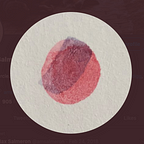The Untapped Potential of Pocket
Ten years later, I’m still an RSS feed junkie. Twitter has the same effect – a constant stream of information to guzzle that might just be feeding a “primitive behavioral instinct”.
One side effect of my preference for news streams is the backlog of saved-for-later articles that is currently hovering around 7,000. (To be fair, all of my media lists, from podcasts, to books, to movies, are absurdly long.)
So while it’s understandable that my Pocket queue is too large, I think it’s compounded by a product issue. After all, Twitter is by far the most used app on my phone, because despite all of its shortcomings, it’s a compelling product.
One of the reasons it’s compelling is the nature of its stream – like Instagram or Reddit or Digg Reader or Facebook, there is a quasi-infinite scroll that encourages you to keep your eyes glued to the screen.
Pocket (and its main competition, Instapaper) both use an interface that feels more bookish – you tap on an article, read it, then tap ‘archive’, then tap on a new article. This process, by its very nature, acts like Netflix’s ‘Do you want to keep watching?’ screen (except at a 20x rate of reoccurrence).
It introduces friction, and I’d hypothesize, reduces the time spent in-app in comparison to an infinite scrolling interface. It’s easy to test this out if you have an iOS device. Apple’s implementation of a read-it-later service in Safari is the only one that includes an infinite scroll, and despite its slow loading times, is more sticky than Pocket and Instapaper. Instead of two taps to go on to the next article, it’s zero. I just keep scrolling.
WebOS, despite ending up in the dust of Android and iOS, had a keen focus on tap counting. According to tech lore, there was one person at Palm whose job was to count the number of taps (steps) it took to accomplish each task. The goal, of course, is to reduce that number as much as possible in effort to increase usability and task speed. If you can reduce the number of steps necessary to complete common tasks, do so.
Perhaps this is just me though, and my triage process for sifting through daily content. Usually, I look through the headlines and summaries, saving non-pressing articles that I want to spend more time on, even if they’re only a few minutes long. Perhaps Pocket’s main audience spends more time per article, and therefore doesn’t notice the friction as much?
Or maybe not. (By the way, Pocket doesn’t tell you how long an article is natively – you’ll need an extension for that – sigh.)
Besides infinite-scroll, Pocket is missing another opportunity that I’m going to roll my eyes after typing – gamification. But yes, I think it’d be a fairly logical method of increasing app use times, and solving the prioritization problem (we like new stuff instead of old stuff).
Pocket’s already dipped its toe onto this path with their yearly ranking process.
But in addition to yearly, they should send a monthly list. And you should be able to see your live stats too, just like Google Reader used to show.
Pocket Casts does a decent job of this too, albeit buried in the settings tab. There are other tools that capitalize on user statistics to drive use, largely in the health space (Fitbit, Apple Watch, etc) and just like good games, they’re more compelling as a result.
I honestly believe that with infinite scroll implemented, and a larger push for user-facing statistics, Pocket could dramatically increase app opens and use-time. But there’s one more bit of untapped potential of which they’re just scratching the surface – trending lists.
Pocket has a terrific data stream – it knows what people are saving, what they’re reading, how long they spend per article, and they know all this not for one single publisher, but for every publisher.
Which puts Pocket in the position to be an excellent curation tool. They’ve started doing this with trending & recommendation tabs in the app, but there’s too much potential to do more.
In my mind, I see a separate app and site designed to mimic a combination of Digg, Nuzzel, and The New York Times. A sister product to Pocket for the folks who aren’t spending so much time on RSS feeds and Twitter. A new curation platform built by folks with so much information about what we read and the way we read it. Oh, and it’d better have an infinite scroll too.
Andres Max Salmeron is currently looking for open APM positions anywhere in the US or EU. That’s definitely one of the top three reasons he wrote this piece. Also, if you have any good articles on UX and product design you want recommend, please send them along and he‘ll add them to his Pocket queue.
